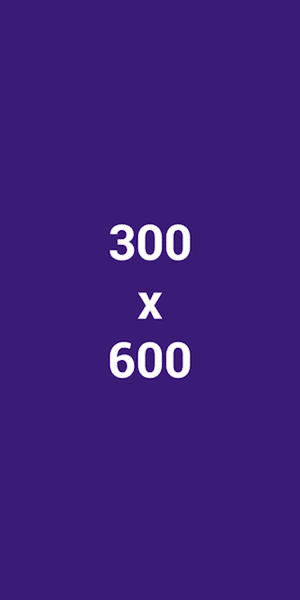NFT Evening analysts have startlingly reported that a staggering 96% of the 5,000 NFT collections evaluated are essentially nonexistent in the year 2024.
Table of Contents
- End of an Era
- The Rise and Fall of OpenSea
- What will happen to the NFT market?
The comprehensive report sheds light on the worrying state of the Non-Fungible Token (NFT) market, uncovering significant challenges faced by the sector in 2024. Predominantly, the alarming revelation that 96% of the over 5,000 NFT collections analyzed are classified as “dead.” This designation implies these collections exhibit no trading volume, haven’t recorded any sales in more than a week, and show zero activity on pivotal social networks.
These findings highlight a concerning trend among NFT collectors, with 40% of them unable to see any profitable returns from their investments in these digital assets. Moreover, the lifespan of these collections averages at a mere 1.14 years, which is significantly shorter, by a factor of 2.5, compared to conventional cryptocurrency projects.
The year 2023 marked an unprecedented phase of decline, with nearly 30% of projects within this segment plummeting into the “dead” category. It’s noteworthy that nearly half, precisely 44.5%, of NFT investors faced financial losses during this period.
Source: NFT Evening
However, amidst this decline, the Azuki project emerges as a beacon of success, revealing an average investment return of 2.3 times for its token holders. This success story is primarily attributed to the project’s robust community engagement, distinct artistic allure, and strategic marketing efforts.
“This success can be attributed to the collection’s strong community engagement, unique artistic appeal, and effective marketing strategies.”
In stark contrast, the Pudgy Penguins collection epitomizes the downfall, witnessing a harrowing 97% decline in value. This dramatic drop signifies the steepest loss ever recorded in this market segment, making it the most unprofitable NFT collection to date.
The pervasive downturn in the NFT marketplace has prompted a cautious approach among investors in this space. With the market’s ongoing struggles, experts suggest that creators and developers within the NFT realm need to revisit and potentially revise their project execution strategies.
You might also like: Pudgy Penguins firm secures $11m to build new L2 project
End of an Era
NFTs, especially those originating from highly sought-after collections during the 2022 hype, are now being sold at significantly lower prices, incurring vast losses. A striking example is the collection of NFTs owned by pop star Justin Bieber. Initially valued at around $2 million in 2022, these digital assets have plummeted, now barely exceeding a value of $100,000, marking a drop of 94.7% in value.
Justin Bieber NFT Purchases: Down 94.7%
Did you know that Justin Bieber bought more than $2M of NFTs during 2022 – now worth barely over $100K.
His wallet on Arkham now holds just under $500K in ETH and APE.
Details below: pic.twitter.com/U6qH84C3OO
— Arkham (@ArkhamIntel) April 24, 2024
Justin’s foray into the NFT world saw his wallet initially boast $2.34 million in Ethereum (ETH), with a substantial portion, $1.86 million, allocated towards acquiring two Bored Ape Yacht Club (BAYC) and a pair of Mutant Ape Yacht Club (MAYC) tokens. Additionally, his collection spanned other notable tokens, including those from the World of Women, Doodles, Otherdeed, and Metacard collections, all of which have seen a decline in value falling between 89.7% and 97.4%.
Another noteworthy example is Deepak Thapliyal, the purchaser of the highly priced CryptoPunk #5822, which he acquired for a jaw-dropping 8,000 ETH ($23.7 million at the moment of transaction) back in 2022. Amid the frenzy within the sector, this transaction ranked amongst the top four most expensive NFTs of 2022. However, Thapliyal’s decision to offload the asset, without revealing the exact sale price, spurred speculation of a significant loss. Whisperings within the community pointed towards VOMBATUS as the potential buyer, with rumors suggesting the token changed hands for merely 1,500 ETH (~$3.9 million), a staggering 80% depreciation from its previous valuation.
End of an Era.
👋 #5822, Enjoy your new 🏡
— Deepak (@dt_nfts) August 19, 2024
The Rise and Fall of OpenSea
In a specular rise reminiscent of the broader crypto frenzy, the total trading volume for NFTs skyrocketed, reaching its zenith in January 2022 with transactions surpassing $6 billion. Fast forward to July 2024, and the landscape presents a drastically different picture, with the volume plummeting below $430 million. This downtrend underscores that although NFTs haven’t vanished, their vitality is severely compromised.
Caught amidst this tumultuous phase is OpenSea, the once-reigning champion of the NFT marketplace. The platform’s woes have been compounded by a host of challenges, among them litigation from the Securities and Exchange Commission (SEC) and the Federal Trade Commission (FTC), enhanced scrutiny from tax authorities both in the U.S. and abroad, a surge in competition, allegations of internal discrimination, and widespread employee layoffs. In a significant hit to its valuation, OpenSea experienced a nosedive from a staggering $13.3 billion to a mere $1.4 billion. This dramatic descent was precipitated by one of its leading investors, Coatue Management, a venture capital entity based in New York, recalibrating their stake in the crypto startup by a downward 90%, transforming a once-hefty $120 million investment into a mere $13 million.
Despite this turmoil, OpenSea seems not to be completely out for the count. An internal document reviewed in November 2023 reveals the company’s financial reserves, consisting of $438 million in cash and an additional $45 million in cryptocurrencies. Armed with this war chest, OpenSea aspires towards a significant pivot to a ‘2.0’ business model, in hopes of weathering the storm and setting sail towards more favorable tides.
“It had $438 million in cash and $45 million in crypto reserves as of November 2023, according to an internal document, and it’s coasting on that capital as it hopes a ‘2.0’ pivot will help it navigate choppy seas.”
You might also like: SEC’s regulatory hammer falls: OpenSea, Custodia, and the revival of Operation Choke Point 2.0
What will happen to the NFT market?
The NFT marketplace, historically dominated by platforms like OpenSea or Rarible, offered users a streamlined avenue for minting new NFTs or engaging in trading activities. Beyond the primary marketplace functionalities, the sector also includes lending services and platforms dedicated to trading derivatives of NFTs from major collections, enabling speculative activities without necessitating direct ownership of the assets.
This dynamic, however, is hampered by persisting bearish trends, as illustrated by the swift depreciation in value of NFTs emanating from esteemed ‘blue chip’ collections.
Read more: DeFi Daily News for more trending news articles like this



















